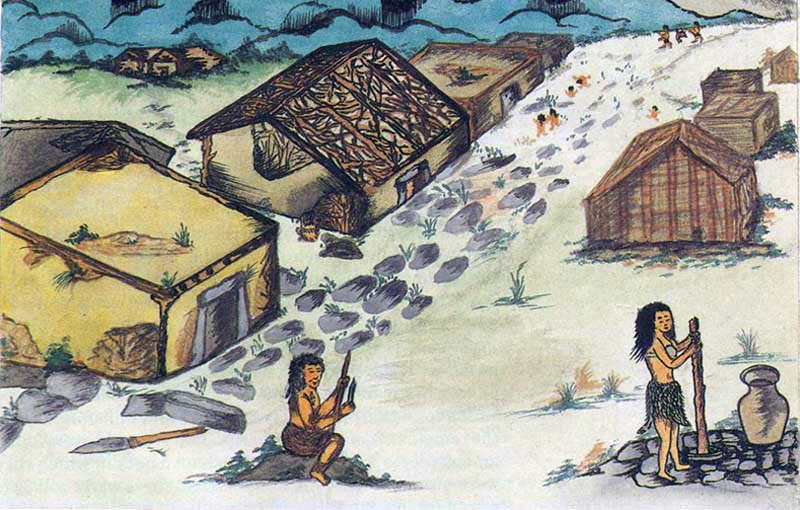The First Tibetans
Until recently, little was known about the very early history of Tibet. No written accounts have been found before the seventh century AD, when Buddhism was adopted by the Kings of Tibet. However, work by Tibetan scholars and Chinese archeologists has revealed some startling new facts about where the Tibetans came from and how they lived at the dawning of time.
Perhaps the most popular tale among Tibetans is the story of how they were descended from a monkey and an ogress. The monkey – believed by the Buddhists to be a manifestation of Chenresig, Lord of Compassion- was content to lead a life of quiet prayer and meditation. But the ogress – a manifestation of Tara – grew lonely living on her own. Her sad crying filled the monkey with compassion, and so he agreed to marry her. They had six children- from whom all Tibetans are said to be descended. Certainly, caves inhabited by a primitive monkey people have been found in the U-Tsang region of Tibet, so this popular story may be more than just legend.
A careful study of old Indian and Chinese manuscripts by Tibetan scholars has brought to light a number of other stories about the origins of the Tibetan people. Some scholars believe that the Tibetans are descended from the followers of an old Indian king, called Ripati, who is said to have fled across the Himalayas disguised as a woman, after his army was defeated in battle. There is a letter written by the Indian teacher, Shankara Pati, in the fifth century BC, which describes Ripati’s flight. Other scholars believe that the Tibetans may owe their origins to a group of Turkhara tribesmen. They are thought to have escaped from western Asia around 150 BC, after a defeat by the fierce Hun people. Another popular theory is that the Chiang people represent the first recognizable Tibetans. This group of people still live and flourish in north-eastern Tibet today. Finally, some historians believe that the Tufan tribes of western Tibet are the most likely ancestors of the Tibetan people. However it is possible that there were people living in Tibet before any of these different races arrived there.
Recently, Chinese archeologists have made some discoveries, which suggest that there were people living in Tibet much earlier than historians had previously thought. While digging in the hills around the settlements of Sure in southern Tibet, and Luling in central Tibet, archeologists discovered a large collection of stone tools and a number of broken jars and pots. By using scientific methods of dating, the archeologists were able to tell that people were living in these areas at least 50,000 years ago. One of the reasons why primitive man was able to survive the harsh environment of Tibet so long ago, is that the weather there may have been milder at that time.
Even more startling is the discovery by the Chinese of a complete New Stone Age village at a place called Karub, near the town of Chamdo in eastern Tibet. By examining the remains of the houses, and the many stone tools and bits of pottery found in them, we are able to get a very clear picture of how these people lived and worked about 4,600 years ago. Their houses were made from clay and wood, and were quite strong. Each house contained a cooking stove placed in the center, and long stone slabs framed the doors. Streets paved with stones ran between different houses of the village. Many tools were found, cleverly chipped from stone- spades, hoes, ploughs, axes, knives, and millstones. Even the remains of corn seeds, nearly 5,000 years old, were found among pieces of the beautifully shaped pots in which they were stored. These finds show that these early villagers were farmers as well as hunters.
A number of other New Stone Age villages have been found in different parts of Tibet. Archeologists have also discovered evidence of early nomadic life. In the wild and remote areas of north and western Tibet, stone tools have been found which date back many thousands of years. It seems that the nomads too, were wandering the mountain pastures of Tibet much earlier than was previously supposed.
These fascinating discoveries about life in early Tibet are only the beginnings. Undoubtedly, there are settlements, villages – perhaps even towns, yet to be found.

